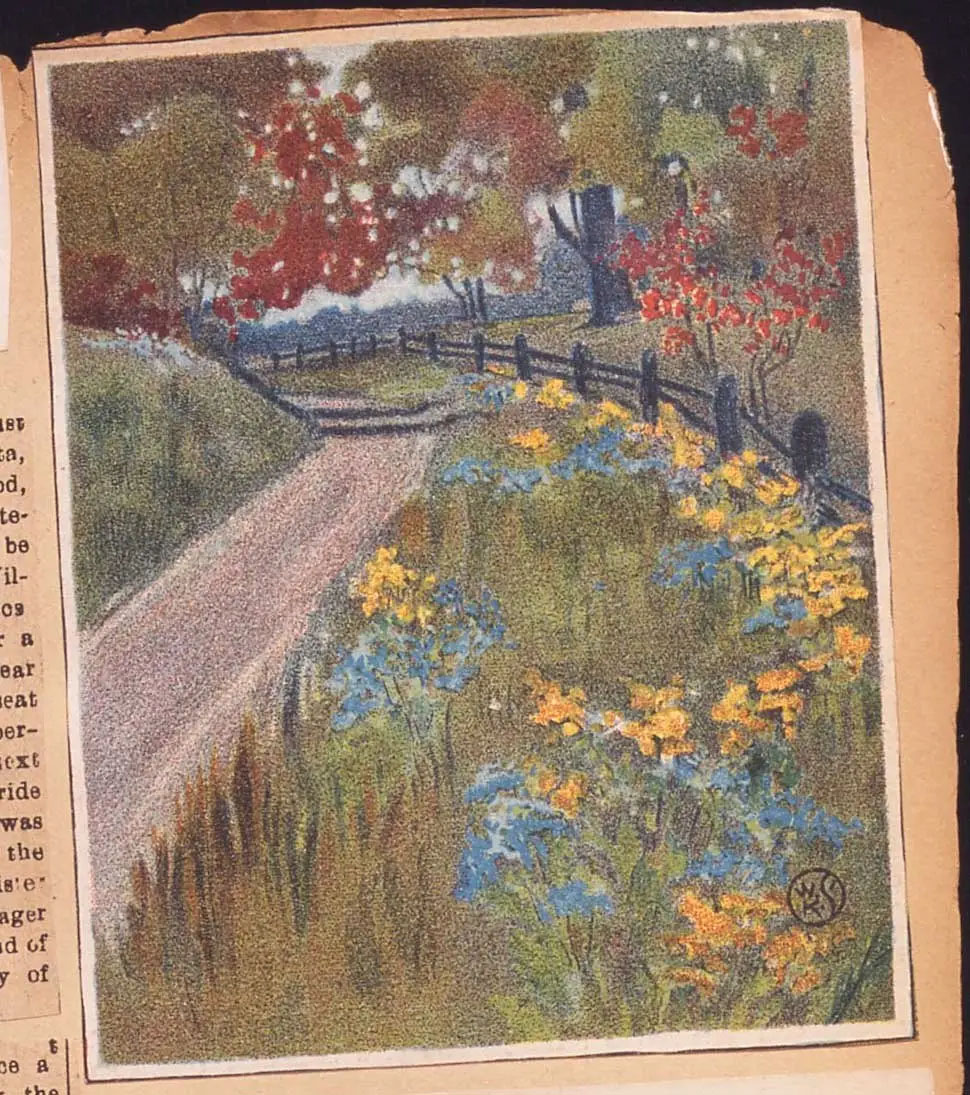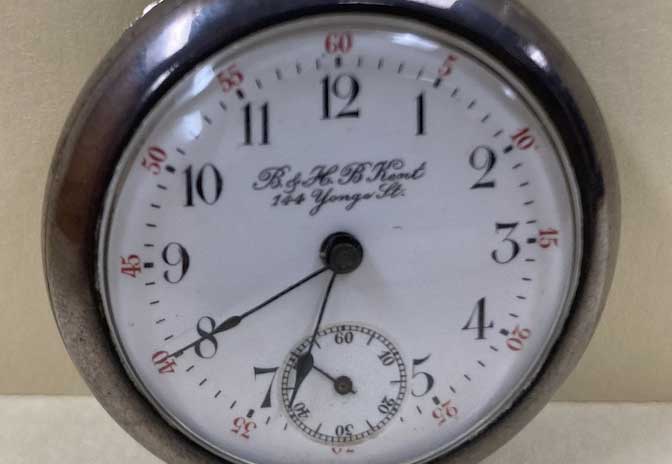Rich with Allusions: Anne’s Literary Connections
Rich with Allusions: Anne’s Literary Connections
Emily Woster
“Don’t you just love poetry that gives you a crinkly feeling up and down your back?”
- Anne Shirley, page 85-86
Anne of Green Gables contains direct and indirect references to 55 novels, fairy tales, poems, essays, recitation pieces, songs, operas, plays, and periodicals. There are another 18 references to the Bible, the catechism, and the Book of Common Prayer. The richness of the allusions throughout the novel underscore both Montgomery’s and Anne’s deep connections to the power of words. As Rea Wilmshurst notes, Montgomery’s allusions reflect her “voracious reading, her passionate response to imagined life, and her prodigious and eclectic memory.” 1
Unsurprisingly, Anne treasures poetry above all other genres; 26 of the allusions in the novel refer to poems of all kinds. Scott, Lowell, Longfellow, Tennyson, Browning, Whittier, Hemans, and others let Anne share her delight in poetic language, fanciful imagery, and dramatic histories. The most frequently cited author is Shakespeare, from whom seven different plays and poetic lines are quoted.
Anne, and her narrator, use poetry to express emotion, paint colourful images, and to illustrate their storytelling. After dyeing her hair green, Anne expresses her dismay at the thought of ever returning to school with a quote from Sir Walter Scott’s Marmion: A Tale of Flodden Field, “Oh, Marilla, ‘what a tangled web we weave when first we practice to deceive.’ That is poetry, but it is true.”

Montgomery's own copy of the Poems of Robert Browning from 1910. This copy was gifted to her by her long-time correspondent, George B. MacMillan.
Another reference in the story, to Robert Browning’s “Evelyn Hope,” appears in Chapter 22 when “Anne is Invited Out to Tea”; the narrator says “All ‘spirit and fire and dew,’ as she was, the pleasures and pains of life came to her with trebled intensity.” Sometime after the manuscript was accepted, Montgomery also decided to use that line as the epigraph that would appear on the title page of the published novel.

The title page to the first edition of Anne of Green Gables, including the epigraph
"'The good stars met in your horoscope, / Made you of spirit and fire and dew." — Browning.
But the high exists alongside if not the “low,” then at least the “lower.” School recitation pieces like “How Sockery Set a Hen,” written in a supposed “Dutch” dialect, bring moments of levity and humour to Anne’s story and mimic Montgomery’s own school recitations.
Judging by the manuscript itself, Montgomery carefully planned or inserted some of the references, while others may have occurred to her as she was drafting.
Works Referenced
Use the search feature, or navigate to each of these chapters, to find these references in the manuscript itself.
| 2 | Lowell, James Russell | The Vision of Sir Launfal | long poem |
| 2 | Sterne, Lawrence | Sentimental Journal through France and Italy | novel |
| 2 | Balfe, Michael William and Alfred Bunn | The Bohemian Girl | opera |
| 2 | Shakespeare, William | Romeo and Juliet | play |
| 4, 20, 36 | Andersen, Hans Christian | "The Snow Queen" | fairy tale |
| 5 | Scott, Sir Walter | The Lady of the Lake | long poem |
| 5 | Campbell, Thomas | “The Battle of Hohenlindin” | poem |
| 5 | Campbell, Thomas | "The Downfall of Poland | poem |
| 5,19 | Norton, Caroline Sheriden | "Bingen on the Rhine" | poem |
| 5 | Aytoun, William Edmondstoune | "Edinburgh after Flodden" | poem |
| 5 | Whittier, John Greenleaf | "Cobbler Keezar's Vision" | poem |
| 7 | Mortimer, Favell Lee | The "Peep of Day" series | novels |
| 8 | Carroll, Lewis | Alices Adventures in Wonderland | novel |
| 10 | Goldsmith, Oliver | The Vicar of Wakefield | novel |
| 11 | Sigourney, Lydia | "The Dog at his Master's Grave" | poem |
| 12, 14 | Root, George Frederick | "Nelly of the Hazel Dell" | song |
| 14 | Scott, Sir Walter | The Lay of the Last Minstral | long poem |
| 15, 20, 26 | Shakespeare, William | Hamlet | play |
| 16 | Scott, Sir Walter | Ivanoe | novel |
| 18 | – | Farmer's Advocate | periodical |
| 18 | Hemans, Felicia | "The Siege of Valencia" | poem |
| 19 | Thorpe, Rose Hardwick | "Curfew Must Not Ring Tongith" | poem |
| 19 | Cooper, George and Harrison Millard | "Far Above the Daisies" | song |
| 19 | – | "How Sockery Set a Hen" | recitation piece |
| 19, 30 | Shakespeare, William | Julius Caesar | play |
| 20 | Baker, Andrew W.C. | "My Home on the Hill" | song |
| 21 | Byron, Lord | Childe Harold's Pilgramage | long poem |
| 22 | Browning, Robert | "Evelyn Hope" | poem |
| 22 | – | Family Herald and Weekly Star | periodical |
| 24 | Shakespeare, William | As You Like It | play |
| 24 | Bell, Henry Glassord | "Mary Queen of Scots" | poem |
| 24 | Denison, T.S. | "The Society for the Suppression of Gossip" | play for recitation |
| 24 | anonymous | "Fairy Queen" | recitation piece |
| 24 | Shakespeare, William | The Merchant of Venice | play |
| 25 | Shakespeare, William | Macbeth | play |
| 25 | Shakespeare, William | All's Well that Ends Well | play |
| 26 | Browning, Elizabeth Barrett | "Lady Geraldine's Courtship" | poem |
| 27, 29 | Scott, Sir Walter | Marmion | long poem |
| 28 | Tennyson, Alfred | "Lancelot and Elaine" | poem |
| 30 | Wallace, Lew | Ben Hur: A Tale of the Christ | novel |
| 30 | Scott, Sir Walter | Kenilworth | novel |
| 31 | Longfellow, Henry Wadsworth | "Maidenhood" | poem |
| 31 | Pope, Alexander | "An Essay on Criticism" | essay |
| 33 | [Caroline Oliphant or Stafford MacGregor] | "The Maiden's Vow" | poem |
| 34 | Scott, Sir Walter | Rob Roy | novel |
| 34 | Tennyson, Alfred | "The Brook" | poem |
| 34 | Hemans, Felicia | "Woman on the Field of Battle" | poem |
| 36 | Wordsworth, William | "Ode: Intimations of Immortality" | poem |
| 37 | Longfellow, Henry Wadsworth | "The Reaper and the Flowers" | poem |
| 37 | Riley, James Whitcomb | "Away" | poem |
| 38 | Holley, Marietta | "Josiah Allen's Wife" - the Samantha series | novels |
| 38 | Tennyson, Alfred | "Palace of Art" | poem |
| 38 | Browning, Robert | Pippa Passes, a Drama | long poem |
Other Literary Antecedents
In addition to the more obvious allusions listed in the chart above, there are other tidbits of the story that may have less easily traced literary ancestors. For example, Montgomery’s use of the phrase “kindred spirit,” which many readers now associate only with her, may have come from a multitude of places, including Thomas Gray’s “Elegy Written in a Country Churchyard” (1751), Olive Shreiner’s Story of an African Farm (1883), or Elizabeth von Arnim’s Elizabeth and her German Garden (1898), all favourites of Montgomery’s.
Perhaps her love of Washington Irving, and his “The Legend of Sleepy Hollow,” influenced Anne’s tales of a headless ghost in the Haunted Wood in Chapter 20, and surely her knowledge of dime novels and other dramatic or sentimental fiction influenced Anne’s knowledge of the (fictional) Lurid Mystery of the Haunted Hall in Chapter 30.
The final image in the novel, of “The Bend in the Road” (Chapter 38), also has likely literary roots. In Montgomery’s early scrapbook, she preserved a copy of a poem called “Bend of the Road” by Grace Denio Litchfield. Above the poem clipping, she (crookedly) pasted in a printed card showing a bend in a road.

The "Bend in the Road," from page 26 of Montgomery's "Red Scrapbook" (see Imagining Anne, p. 132)
Anne’s Later Allusions
Montgomery’s other novels are as rich with allusions as Anne of Green Gables.
From Anne of Avonlea (1909) to Rilla of Ingleside (1921), Montgomery continued to weave in allusions to poems and plays, novels, and songs.
In the last Anne book published in her lifetime, Anne of Ingleside (1939),2 the first third of the story contains references only to incidents and moments from the Anne series itself. Only later in the novel does Montgomery return to quoting from poetry or referencing other work. In addition, the later Anne novels contain allusions to many of the same authors cited in the earlier novels. Tennyson and Whittier, Shakespeare and Browning, and others, all pop up throughout the series. While Montgomery read voraciously, and read contemporary work, her allusions remained dedicated to her past reading and to entering Anne’s time and mind.
In all, the allusions in Anne reveal an author who both consciously references meaningful lines from favourite works and unconsciously alludes to vital parts of her reading life.3

1 Rea Wilmshurst was the first to track down and trace many of the allusions in Anne of Green Gables and the later Anne books. See “L.M. Montgomery’s Use of Quotations and Allusions in the ‘Anne’ Books.” Canadian Children’s Literature / Littérature canadienne pour la jeunesse, vol. 56, 1989, pp. 15–45. Her work resulted in an indexed list of Montgomery’s sources; an impressive but incomplete list given that Wilmshurst was working only from volumes of Bartlett’s quotations and other physical reference works available at the time. Back
2 Anne of Ingleside and Anne of Windy Poplars (1936) are what Benjamin Lefebvre calls “interquels,” as the events of the books take place between the events of previous books in the series, though they were written last. The series was not packaged in internal-chronological order and numbered as such until the 1980s. Back
3 See also“Old Years and Old Books: Montgomery’s Ontario Reading and Self-Fashioning,” in L.M. Montgomery’s Rainbow Valleys: The Ontario Years, 1911–1942, edited by Rita Bode and Lesley D. Clement, McGill-Queen’s University Press, 2015, pp. 151–65; "L.M. Montgomery and Reading in/as Autobiography,” a/b: Auto/biography Studies, vol. 29, no. 2 (Autumn 2014), pp. 199–210; and “The Readings of a Writer: The Literary Landscape Created by L.M. Montgomery’s Love of Literature," In “L.M. Montgomery’s Interior and Exterior Landscapes,” special issue, CREArTA, vol. 5 (2005), pp. 209–22. In addition, a future project will offer a searchable database of L.M. Montgomery’s reading past. Back



